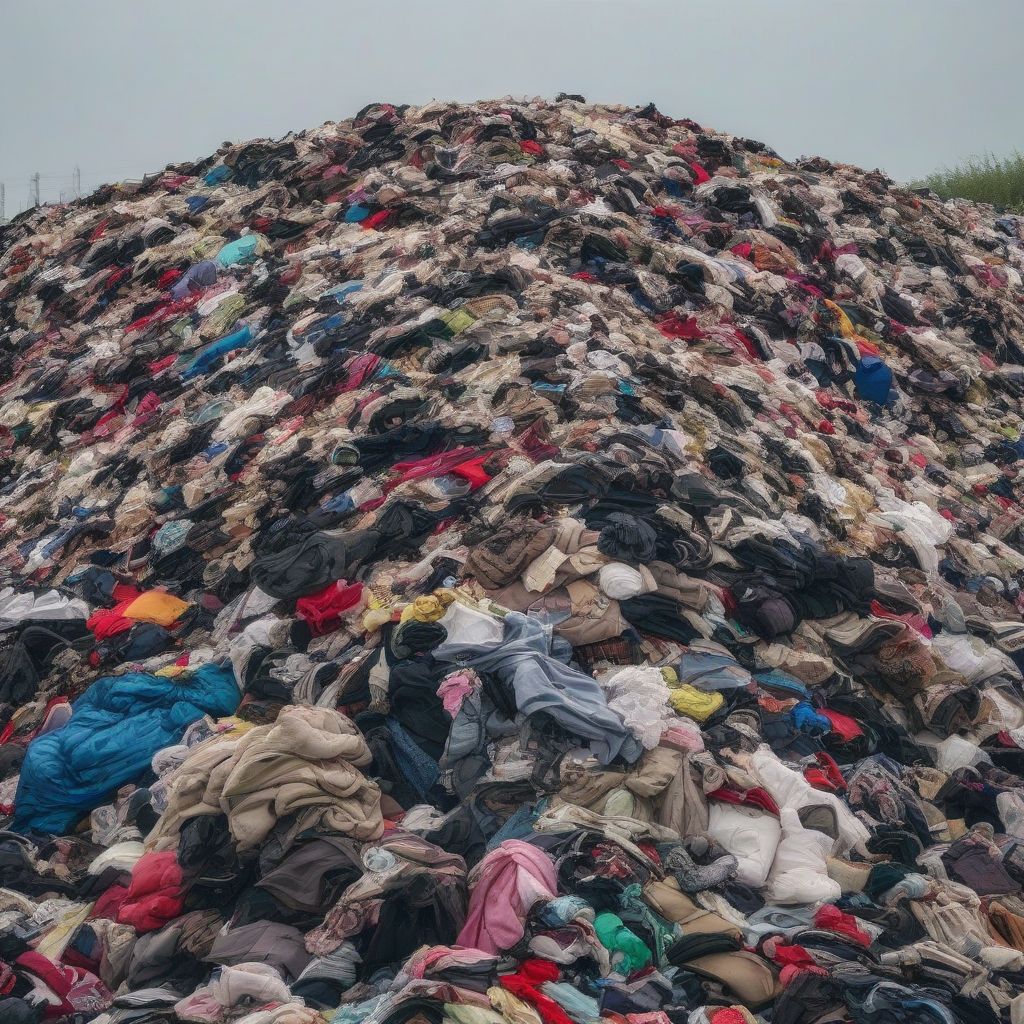Imagine this: you’re standing in your closet, staring at a mountain of clothes, yet you feel like you have nothing to wear. Sound familiar? We’ve all been there. This overwhelming feeling is a side effect of our modern fast fashion culture – a cycle of buying cheap, trendy clothes that quickly fall apart or go out of style. But what if I told you there’s a way to feel good about your wardrobe and lessen your impact on the environment?
As a nutritionist and meal prep coach, I’m passionate about helping people make healthy choices, and that includes the clothes we wear. Let’s dive into the environmental impact of fast fashion versus sustainable fashion, exploring why making conscious fashion choices matters for our planet and ourselves.
The Hidden Costs of Fast Fashion
Fast fashion churns out trendy clothing at lightning speed and dirt-cheap prices. While tempting, this comes at a steep price for our environment. Here’s how:
1. Water Waste and Pollution
Did you know that fashion is one of the thirstiest industries globally? From growing cotton to dyeing fabrics, the water consumption is staggering. Fast fashion’s reliance on conventional cotton farming guzzles vast amounts of water, often in regions already facing water stress. To make matters worse, toxic chemicals used in textile production pollute our rivers and oceans, harming aquatic life and ecosystems.
2. Textile Waste and Landfill Overload
Remember that mountain of clothes in your closet? Now imagine it multiplied by millions worldwide. Fast fashion thrives on a culture of disposability, with garments often ending up in landfills after just a few wears. These clothes, often made from non-biodegradable synthetic fibers like polyester, can take hundreds of years to decompose, releasing harmful greenhouse gases into the atmosphere.
3. Greenhouse Gas Emissions and Climate Change
The fast fashion industry is a significant contributor to climate change. From the production and transportation of raw materials to manufacturing and shipping clothes, the industry’s carbon footprint is massive. The use of fossil fuels in every step of the process releases harmful greenhouse gases, contributing to global warming.
 Fast Fashion Waste
Fast Fashion Waste
Sustainable Fashion: A Breath of Fresh Air
Unlike its environmentally damaging counterpart, sustainable fashion focuses on creating durable, ethically-made clothes while minimizing its ecological footprint. Let’s explore the key principles of sustainable fashion:
1. Ethical and Sustainable Material Sourcing
Sustainable fashion prioritizes natural, organic, and recycled materials. Think organic cotton, hemp, linen, and Tencel – fabrics that are gentler on the planet. Additionally, recycled materials, like plastic bottles transformed into polyester yarn, offer innovative solutions to reduce waste.
2. Reduced Water Consumption and Pollution
Sustainable brands often implement water-efficient production methods and utilize natural dyes or low-impact alternatives to minimize water pollution. By embracing closed-loop systems and water recycling techniques, sustainable fashion aims to reduce its impact on our precious water resources.
3. Fair Labor Practices and Empowering Workers
Unlike fast fashion’s exploitative practices, sustainable fashion champions fair wages, safe working conditions, and worker empowerment. By supporting brands that prioritize ethical sourcing and production, consumers can contribute to a more just and equitable fashion industry.
Making the Switch: Tips for a More Sustainable Wardrobe
Transitioning to a more sustainable wardrobe might seem daunting, but it doesn’t have to be. Here are some practical tips:
1. Invest in Quality over Quantity
Shift your mindset from buying numerous cheap items to investing in fewer, high-quality, durable pieces that will stand the test of time.
2. Choose Natural and Sustainable Fabrics
Opt for clothing made from natural, organic, and recycled materials whenever possible. Read labels carefully and do your research on different fabrics and their environmental impact.
3. Support Ethical and Sustainable Brands
Research and support brands that align with your values. Look for certifications like Fair Trade, GOTS (Global Organic Textile Standard), and OEKO-TEX, which ensure sustainable and ethical practices.
4. Embrace Secondhand Shopping
Give pre-loved clothes a new life by exploring thrift stores, consignment shops, and online platforms for unique and affordable finds.
5. Care for Your Clothes
Properly caring for your clothes can extend their lifespan significantly. Wash clothes in cold water, air dry whenever possible, and learn basic repair skills to mend minor damages.
 Sustainable Fashion Choices
Sustainable Fashion Choices
[amazon bestseller=”sustainable fashion”]
Conclusion: Our Choices, Our Collective Impact
The fashion choices we make have a ripple effect on the planet. By understanding the environmental consequences of fast fashion and embracing the principles of sustainable fashion, we can contribute to a more ethical and eco-conscious industry. It’s not about achieving perfection overnight, but rather making conscious choices that align with our values. Every step we take towards a more sustainable wardrobe, from supporting ethical brands to extending the life of our clothes, is a step towards a healthier planet.
What steps are you taking to make your wardrobe more sustainable? Share your thoughts and tips in the comments below!
